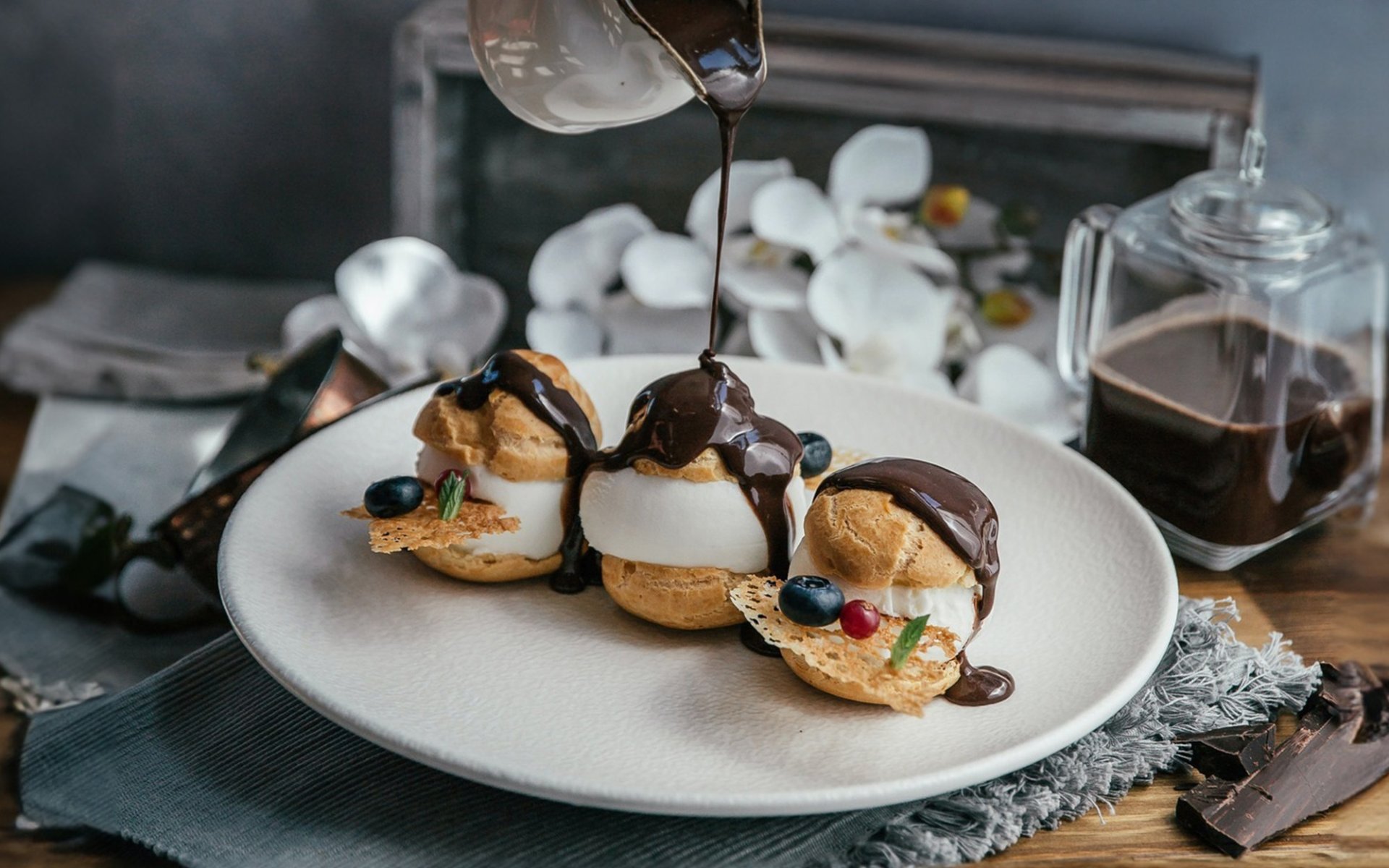Profiterole

Journey back to France during the Renaissance, a period when various aspects of culture and art flourished, including French culinary traditions that began to incorporate new techniques to create sophisticated and impressive dishes. During this era, the French started to utilize Choux Pastry to craft a variety of exquisite desserts, such as cream puffs (chou à la crème), éclairs, and indeed, the Profiterole itself also evolved during this period, showcasing the pastry innovation of the time.
Origins: From Italian Court to French Popularity
Profiterole is a sweet pastry similar to a cream puff, characterized by its small, round choux pastry shell. Traditionally, it is filled with whipped cream or smooth custard and generously topped with delicious chocolate sauce. The history of profiteroles is rooted in Italy. It is said to have been invented by the head chef of Catherine de' Medici, who became Queen of King Henry II of France. When she married and ascended to the throne, she brought her highly talented Italian chef with her to the French court to introduce advanced Italian culinary knowledge and techniques.
Upon arriving in France, Catherine's chef applied the culinary techniques he had perfected in Italy. One of the recipes he brought was for profiteroles, which were originally created for Italian royalty. However, after he followed Catherine, this sweet dish was introduced into French culture and quickly gained immense popularity among the aristocracy, becoming a staple at courtly banquets and gatherings.
Spread in France: The Role of Renowned Chefs and the Origin of the Name
Over time, profiteroles became extremely popular in the French court during the reign of King Louis XIV in the 17th century. François Pierre La Varenne, a renowned French chef of that era, is credited with playing a significant role in popularizing this dessert. His cookbook, Le Cuisinier François, published in 1651, featured various choux pastry recipes, including cream puffs, éclairs, and profiteroles. Consequently, choux pastry-based desserts quickly gained widespread popularity across France and became an important part of the French dessert heritage.
Historically, this dessert may not have been called "profiterole" from the very beginning. The word Profiterole is believed to have originated from the French verb Profiter, which means to profit or to benefit. This is because the dessert was highly favored by the French aristocracy, and its name might imply the enjoyment, pleasure, or benefit derived from consuming such a delectable and luxurious treat.
Evolution and Modern Profiteroles: Limitless Versatility
In the 19th century, pastry chefs began to experiment and modernize profiteroles. They introduced various fillings beyond whipped cream, such as custards, pastry creams, ice cream, or even fruit purees, to create a wider range of flavors and textures that were more appealing and interesting. In France, profiteroles are often associated with celebrations and special occasions, from weddings and receptions to birthday parties. They are frequently displayed on dessert tables, adding a touch of elegance and impressiveness to the festivities.
Subsequently, profiteroles quickly transcended borders and gained popularity in other parts of the world. Each country adapted them to their local culture and ingredients. For example, in Italy, they are called Bigné or Zeppole, often found during carnival festivities. In Spain, they are known as Nun's puffs or Buñuelos de viento. Each culture added its unique touch to the recipe, resulting in a wider variety of profiterole fillings that reflect local tastes and the creativity of chefs.
Today, profiteroles remain a popular dessert and continue to evolve into various forms. Beyond sweet fillings, they now also feature savory fillings such as cheese, smoked salmon, or creamy seafood, becoming popular appetizers at various events. In addition to the fillings, the sauces used as toppings have also diversified beyond just chocolate sauce, now including caramel, raspberry, coffee, or even other tart fruit sauces. This continuous innovation ensures that profiteroles remain a creative and evolving dessert that caters to diverse tastes in the modern era.


